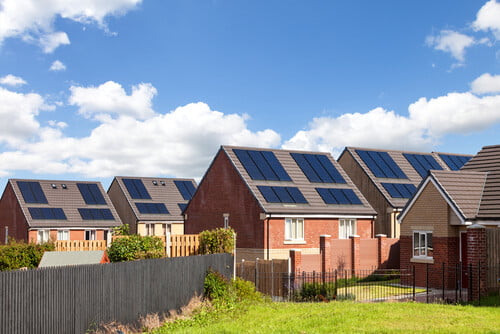

Editors Choice
Carbon Neutral Homes: Pie-In-The-Sky Dreams Or A Future Possibility?
You may have calculated your total carbon footprint. You may have also broken your carbon footprint down to see how much of it is caused by activities in your home. If the size of your carbon footprint was higher than expected, here are some practical solutions that you can use to reduce the carbon footprint of your home, and bring you a bit closer to carbon neutral living.
Your Carbon Footprint
The standard personal carbon footprint for an individual should be approximately 1,000 to 6,000 kg. Unfortunately, some people leave a much larger carbon footprint. Plymouth State University reports that very wasteful people use up to 30 metric tons of carbon a year.
This includes their portion of emissions from the house (for instance, if there are four people staying in your home, then distribute the total output among the four equally and recognize one quarter as your responsibility for the total emissions). The average global carbon footprint is 1,000 kg, but it varies considerably by country and lifestyle. This range is also very high, so it is ideal for people to try having a carbon footprint under 1,000 kg. The average Indian carbon footprint is 1,200 kg whereas an American’s footprint is 17 times that amount. The rule of the thumb is that the richer an individual is, the higher their personal footprint will be.
What Can Be Done In The Home To Reduce Your Carbon Footprint?
Gas and heating emissions are the primary contributors to a home’s carbon output. One easy option is to reduce the heating level in your home keeping it lower for longer periods. Avoid using heat even for a short time span. Evaluate the thermostat of your heating and air conditioning system and if it fails in efficiency replace it with a more energy efficient one. These changes will trickle down into your heating bills and you will likely notice the reduction in these bills if you closely track them.
Opt for other alternatives for heating a home. Insulation is an effective way to do it, according to Anywall. Inspect your house to determine whether there is cavity wall insulation. As a minimum, all lofts should have a minimum depth of at least 30 cm. If you confirm that your house does not have insulation inquire from the local Energy Saving Trust to determine if you qualify for any grants. Their contact information is public information available in your phone book. The local council can also be helpful in providing extra information.
Reducing Your Dependence On Electricity
Electricity use is prevalent and is likely to remain. Electricity usage in households doubled in the period 1972 to 2002. Our reliance on electricity has become an addiction such that we cannot even contemplate going for a day without it. But some people in other continents of the world do not enjoy the luxury of having electricity in their homes and rely on kerosene lamps for lighting. Others utilize other sources of power such as wind or heat pumps using ground energy.
We can reduce our wasteful habits by not leaving electricity powered machines on, turning off the power to machines that we are not using and unplugging electronic gadgets from sockets. That’s right, appliances continue to use electricity when they are plugged in, even if we aren’t using them.
A good option is to substitute our electricity with a green tariff option. Most green tariff options are provided by major electricity supply companies and by other small-scale renewable energy focused companies which match your electricity use with purchases of renewable energy. This scheme works by offsetting the use of traditional fossil fuel power by requiring that your power provider matches your power use by sourcing 100 percent of the power you use from renewable energy sources. The EPA says green tariffs are playing a more important role among the 84% of energy providers that are not corporate entities.
Other Options to Reduce Carbon Emissions
Some other options include; generating some of your electricity by installing solar panels at your home, using biomass for heating or using wind turbines. Also, only buy energy efficient lighting and appliances.
Learning how to be carbon neutral is a slow gradual process. Attempting to do it overnight might result in failure as it can get expensive in the short term. However, if you adopt a gradual transformation, you can over time transit into energy efficient existence and begin enjoying the satisfaction of playing a role in reducing carbon emissions in the world.
Conclusion: Make a Carbon Neutral Home Your End Goal
Minimizing your carbon footprint is very important, especially if you live in a country known for wasteful consumption of energy. There are a number of ways that you can deliver on this goal. Hopefully, you can minimize your carbon footprint and take steps to make the earth a cleaner place.































